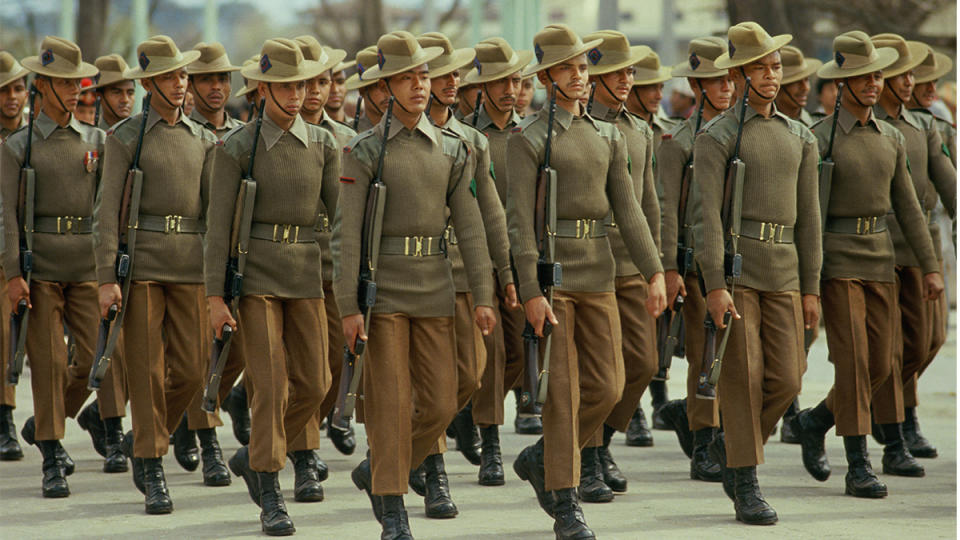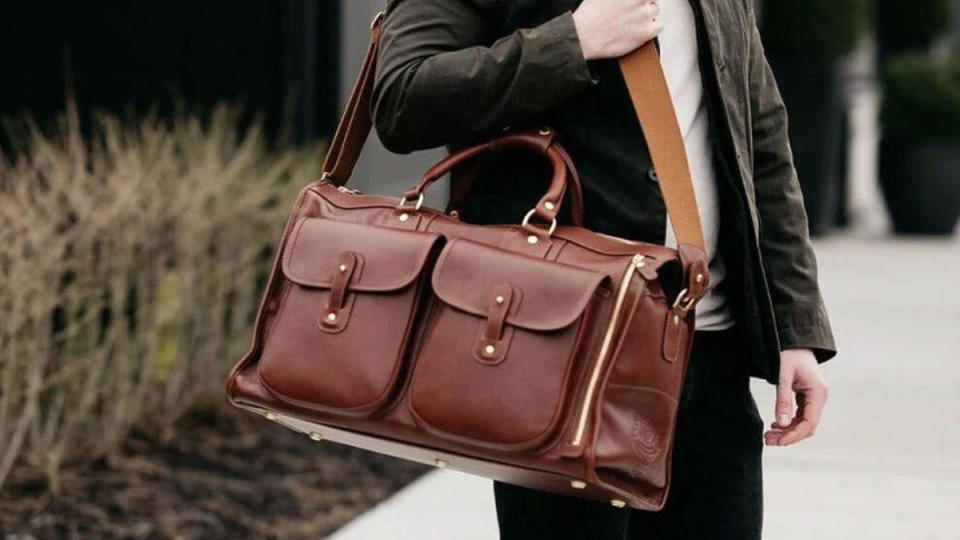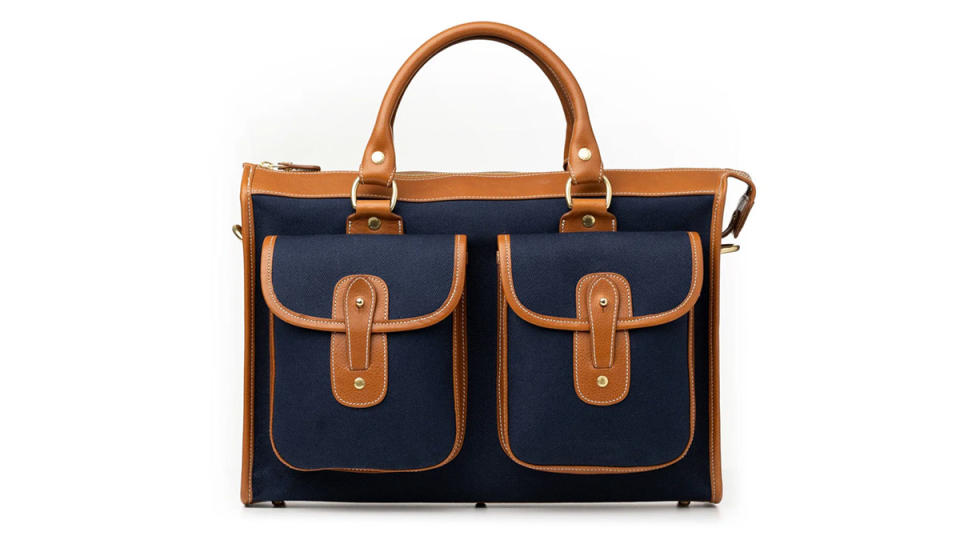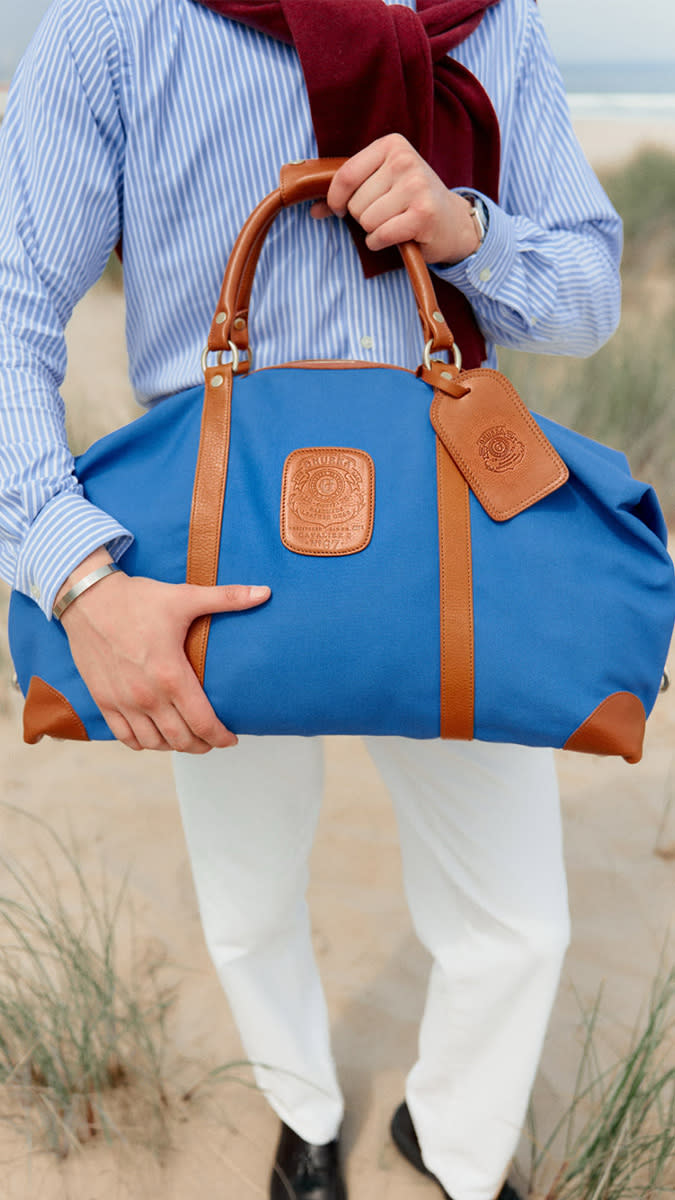It’s a familiar story. A brand emerges, often associated with a single person or slice of geography, and gains a cult following based on the uniqueness of its designs. But times change, along with ownership, manufacturing, and eventually the quality of the product itself. Before long, brand loyalists are decrying the shifts and a once-storied brand fades into obscurity, remembered only by vintage collectors and diehards for its former glory. What’s remarkable about Ghurka is that it’s lived that cycle—only to return to its roots.
The luggage and leather accessories brand was founded in 1975 in Connecticut by Marley Hodgson, an American Anglophile who’d purchased a leather bag at an antiques auction. The well-worn bag, nearly 75 years old, had previously belonged to a British officer assigned to the Ghurkas, an elite military unit recruited into the British Indian Army from Nepal.
More from Robb Report


So enraptured was Hodgson with the bag that he tracked down the English tannery that had produced the saddle leather used to make it, and then worked on replicating it in the United States. Christened “Ghurka” to pay homage to the historical ties, the company’s first product was the No. 1, also known as “Bucky’s Bag”—a leather knapsack that was made for Hodsgon’s son. While never in official commercial production, the No. 1 caused a stir at Bucky’s prep school so there was a built-in demand when Ghurka released its Express No. 2 weekender, a now-iconic design marked by details including exterior flapped pockets that would become a brand signature.
A veritable hit parade of designs followed—all numbered, or “registered,” according to brand tradition—including the Overlander No. 3 bag, the Gearpack No. 4 messenger and the Examiner No. 5 briefcase. The many, at times disparate designs, which would reach into the 100s, were united by a common aesthetic that was more rounded and rugged, with a field-appropriate emphasis on functionality aided by a generous allotment of interior and exterior storage space.


“There’s a really big difference between American and European luxury,” says Robert Williams, who has served as Ghurka’s president since the spring of 2023. “European luxury is about the exterior aesthetic, which American luxury has, but Americans have to have things that work. We’re doers, we’re goers, so our things need to function.”
Ghurka prospered in the decades that followed, inking lucrative deals with Nordstrom and department stores in Japan. But after 9/11 Hodgson chose to exit the business, and Ghurka was sold soon after to the first of multiple new owners. Williams describes the first of these as taking the business in a more “fashionable” direction marked by the use of racing stripes, which proved a poor match for Ghurka’s traditional designs and customer base. It soon changed hands again, this time to a firm that attempted to rebrand Ghurka as a handbag business.
Along the way, more was lost than Ghurka’s identity. The brand’s manufacturing, which had been based in Connecticut since its inception, was moved to Asia. In response, collectors placed a premium on bags belonging to the “Marley Hodgson era,” roughly defined as 1975-2003, and hunted vintage Ghurkas on eBay or through specialty online resellers like Best of Marley.


In 2017, Ghurka was sold for the fourth time, to the Cleveland-based investment group Candlewood Partners (which subsequently spun off a new company dubbed Luxury Leather Brands, LLC to serve as Ghurka’s present owner). Under the new ownership, Ghurka underwent the vanishingly rare process of re-shoring, with production of its bags brought fully back into the United States via a network of manufacturing partners (the smaller accessories, like belts and wallets, are now made in the EU and the UK).
Meanwhile, creative director John Truex (co-founder of Lambertson Truex, which created many an It Bag it the early aughts), was appointed in 2021 and worked to restore Ghurka’s original DNA while updating it for the 21st century. Signature designs remerged from the archives, but with work-friendly features such as laptop sleeves and cell phone pockets.
“John essentially brought the archival aesthetic back, but with a refined, luxury touch,” says Williams. “If Marley Hodgson saw the bag, he would go, ‘Oh, that’s the No. 7, that’s the Express No. 2.”


Ahead of its 50th anniversary in 2025, the reborn Ghurka is feeling confident enough to break new ground. The present season has seen the release of its new Maritime Collection, which reinterprets standards including the Cavalier II No. 97 duffel and the Blazer No. 278 backpack in nautically colored, lighter-weight cotton canvas. And come fall, Ghurka plans to debut the first wholly new style since the most recent change of ownership: a new, four-wheel trolley bag dubbed the Traveler No. 315.
In the end, it’s another familiar story. For Ghurka to stay the way that it was, everything had to change.
Best of Robb Report
Sign up for Robb Report’s Newsletter. For the latest news, follow us on Facebook, Twitter, and Instagram.
Click here to read the full article.
